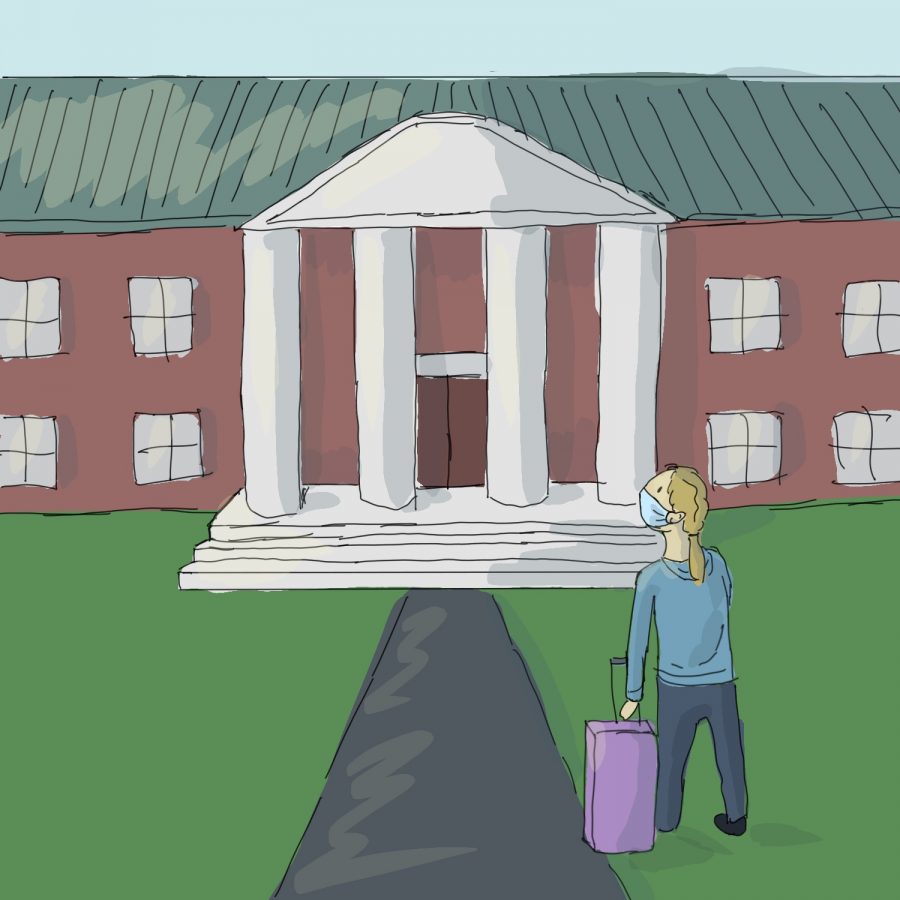The Challenges of COVID-19 For Colleges and Their Students
June 16, 2020
As the 2019-2020 school year ends virtually, colleges across the nation are grappling with how to proceed with the fall semester. Returning students are desperate to continue their on-campus college experience and incoming freshmen are worried that their very first experiences in college will be within the confines of their own homes.
Most universities are yet to announce their plans for the fall semester. Boston-area schools Northeastern University and Boston College have announced that their students will be returning to campus in the fall semester. However, on the West Coast, California State University, a system with twenty-three campuses and half a million students, has decided to spend the fall semester online. While some schools have made a decision, the vast majority are still yet to decide the best way forward for their respective institutions.
CRLS guidance counselor George Finn said that, “Most colleges do not know what they are doing yet.” Although many colleges have been indecisive, students are hopeful that they will be able to attend for the fall semester. “Of the 50-60 kids that I’ve talked to, most are hoping that they will be able to go to college in the fall. Especially for residential colleges,” Finn said.
The indecision of colleges is worrying many high school seniors planning on enrolling next fall. Ella Simonsen ’20, who will be attending UMASS Amherst, was initially worried about the effect coronavirus could have on her college experience, saying, “It’s been on my mind a lot.” She eventually decided to enroll this fall, because otherwise she would have had to reapply for next year’s class. When asked about the possible disruption to her freshman year, an important time in the college experience, Simonsen said, “[Spending the fall semester at home] is a concern of mine. I also recognize that I’ll have seven other semesters to enjoy myself and to get to know people.”
A study conducted by the Art and Science Group found that 17% of high school seniors have decided to change college plans. This figure, mostly reflecting students’ plans to take a gap year, shows a significant reaction to the outbreak, but it still is a small enough number for most colleges to fill their classes. The rate of students taking gap years could have been higher, but the lack of opportunity for work experience or other enrichment activities in the next year due to the pandemic may encourage students to enroll in the fall of 2020.
College is already a major financial burden, an issue that will undoubtedly be exaggerated by the hardships many Americans are facing at the moment.
Along with the issue of returning to campus in the safest manner possible, universities are forced to deal with financial issues. Even Harvard University, with its forty billion dollar endowment, has announced a freeze on hiring and salaries. In Harvard’s case it is more of a precautionary measure, but for other schools the situation is much more dire.
The economic effect of the pandemic has accelerated the rate at which struggling, small liberal arts colleges are closing. The federal relief package, the CARES act, signed earlier this spring handed out $14 billion to universities, most of which was given to students to cover tuition costs. Colleges are also expecting a significant decrease in international student enrollment due to obstacles while attempting to cross borders and health risks associated with travel. International students tend to pay more in tuition than domestic students, meaning there is potential for a significant loss in college budgets.
Although some colleges may be struggling, many students and their families are having a much more difficult time making ends meet in this environment. College is already a major financial burden, an issue that will undoubtedly be exaggerated by the hardships many Americans are facing at the moment. High rates of unemployment and pay cuts may force high schoolers to reconsider their academic futures in order to find work and provide for their families. Furthermore, if colleges do not recover financial losses quickly, they might not be in the position to offer the same financial aid packages as before, making college unaffordable for even more Americans.
Around the nation, people have sought to congratulate and console the Class of 2020 as their last few months of school were cancelled. However, the impact on other classes, particularly the junior class could also be significant. For prospective college students, the spring of junior year is an important time to prepare for applications. This year however, many important parts of the college admissions process, from standardized tests to college tours have been cancelled or postponed, causing uncertainty for the future. Sascha Angel ’21 explained the situation of the Class of 2021 compared to the Class of 2020, saying, “Obviously this has been very hard on the senior class, but they at least had a junior spring and senior fall that was pretty cohesive. They didn’t have a big interruption. They got to go to all their tours and they got to figure out what they wanted for the most part.” Colleges have tried to reach out to prospective students in the high school Class of 2021, but according to Angel, “I’ve definitely been trying to look at some college stuff, but it’s just harder to do that when it’s all online. If I had had the opportunity where I could have … gone on college tours then I think I would have been more proactive.”
This year’s junior and senior classes might have had their valuable time preparing for college taken, but colleges and younger students hope that soon enough the admissions process will return to normal.











